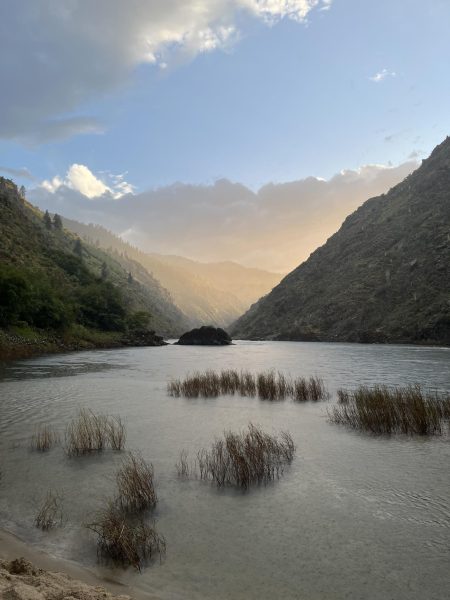Recent Archeological Findings Reveal Human Occupancy of North America 2,000 Years Prior to Original Assumptions.
Roughly 20,000 years ago, the Earth’s atmosphere was shifting dramatically as an ice age which had begun 100,000 years ago was beginning to thaw. Geologists and Archaeologists alike believe that the ice age reached its end around 13,000 years ago. The Bering land bridge between Asia and North America, which had previously been the sole explanation for ancient human’s travel to North America, had not yet melted but ice sheets between Alaska and Alberta, Canada were thawing to make a passageway across North America.
The ancient people traveling through this area were called the Clovis and their archeological sites that stretched from Canada to New Mexico were identifiable by their distinctly fluted spearheads and tools. The Clovis people have been dated around 13,000 years ago and were the oldest known anthropological sites on the continent, suggesting that these were the first people in North America. All of which supports the land bridge theory.
In the last few decades though, archaeologists, including Loren Davis of Oregon State University, were curious if this was the whole story. An excavation in Western Idaho at Coopers Ferry, a site on what is now the Lower Salmon River, revealed that perhaps other people besides the Clovis had been in North America. Tools uncovered did not match the typical fluted spearheads that the Clovis people were consistently known for. A lack of technology left Coopers Ferry an unresolved mystery until recent carbon dating technology was brought back to the site. Radiocarbon dating, luminescence dating, and a computer model were employed, finding materials dating back to 13,000 years ago (same general time as the Clovis people), suggesting that the two groups had perhaps co-existed.

However, the site became more staggering the deeper they dug. “Our results just kept on coming in older and older and older,” said Davis. Charcoal and animal bones found in human made pits were dated around 15,000 to 16,000 years ago; nearly two to three thousand years prior to our knowledge of people in North America!
Archaeologists like Davis were then faced with the explanation of how humans were reaching sites like Coopers Ferry. Without the clearing of an ice-free corridor, and geologic evidence of ocean levels being higher than present day, archeologists considered the possibility that these people were seafarers. “The most parsimonious explanation we think is that people came down the Pacific Coast, and as they encountered the mouth of the Columbia River, they essentially found an off-ramp from this coastal migration and also found their first viable interior route to the areas that are south of the ice sheet,” Davis says.
Coopers Ferry is an idyllic spot for the area’s hot summers and cool winters. The Niimíipuu people who have occupied Idaho for at least the last 11,500 years refer to the site as “ancient village” and consider it, like all Idaho river corridors, sacred.
Coopers Ferry is not the only site in North America that suggests human occupancy for longer than 13,000 years. Sites in Chile, Texas, and Oregon all boast similar findings. The collection of data between different archaeological sites across the world are presenting exciting connections helping to unfurl the past of ancient humans.

As research continues to uncover new locations and technology improves, the clouded evolution of humankind becomes ever clearer.
Today’s astounding radioactive dating, luminescent dating and site dating software make now an extremely unique time in archeological history, one in which we lucky onlookers get to watch the knowledge of our species continually expand.
The post Recent Archeological Findings Reveal Human Occupancy of North America 2,000 Years Prior to Original Assumptions. appeared first on Wasatch Magazine.





